B aa baa all sheep
LOOK AT ALL YOUR WOOL
The Rondeau sheep herd already had 32 (and counting) additions by April 16. Lambing season was well underway and the corral was a-buzz with new ones running around acting like they were “on the lam”.




The Rondeau sheep herd already had 32 (and counting) additions by April 16. Lambing season was well underway and the corral was a-buzz with new ones running around acting like they were “on the lam”.












 By Murray Green
By Murray Green

Viking and area residents have improved access to care with the recruitment of a new physician.
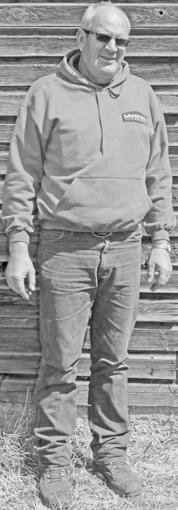
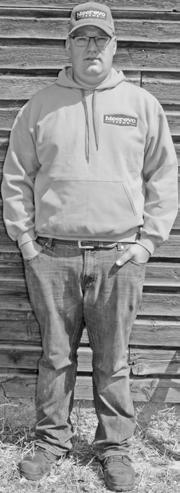

Dr. Joan Smith, who works at the Viking Health Centre and Viking Medical Clinic, is accepting new patients. She can be reached at 780-336-4786.
With Dr. Smith’s arrival, Viking now has five physicians practising in the community.
“As part of the Rural Health portfolio under the leadership of Parliamentary Secretary, Tany Yao, I have consulted with the


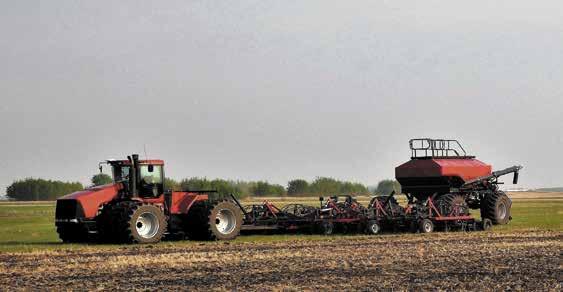
team and many groups across the province to identify hurdles and barriers to effective care in rural Alberta,” said Jackie Lovely, MLA for Camrose. “I am thrilled Dr. Smith has accepted the call in the beautiful community of Viking, where her full scope of practice can be exercised as well as her being a respected pillar in the community.”
Dr. Smith received her medical training at the University of Pretoria, South Africa, and previously practised in Pretoria’s Life Eugene Marais and Life Wilgers hospitals.
The team-oriented approach and good work/ life balance at the Viking facilities were key factors in attracting Dr. Smith to the community. As a fan of outdoor recreation, she has been trying new winter sports and exploring the Viking area.
Alberta Health Services (AHS) continues to recruit for physicians across Alberta to meet community needs. AHS has physician resource planners who are dedicated to identifying and pursuing international and domestic physician recruitment opportunities.











Submitted





The Battle River Community Foundation awarded a $10,000 grant to Flagstaff County in partnership with the Flagstaff Community Adult Learning Society.

The grant supports the Flagstaff Community Adult Learning Society’s Building Blocks Family Literacy Program, which provides free in-home literacy sup-
port. The program is delivered in Daysland, Forestburg, Lougheed, Sedgewick, Hardisty and online.
The grant is from income earned by the Cliff and Jean Saville Fund supporting the Hardisty and Irma communities; the Janis Jesswein Legacy Fund supporting children in the Battle River area; the Everett and Mary Goodrich Memorial Fund supporting




education in the Battle River area; Flagstaff Creative Writers Fund supporting the Flagstaff area; Battle River Training Hub Legacy Fund supporting programs directed at adult education in Flagstaff County; and the Foundation’s Community Funds, a group of endowed Funds that permit the Foundation Board to select grant recipients from applications received annually.
The Battle River Community Foundation exists to support organizations in East Central Alberta, which benefit the local communities and have a positive impact on the future.



Grants from the Battle River Community Foundation are primarily made possible through the generosity of individual donors and organizations that have created endowment funds. The principal of these endowment funds are kept intact and the income is made available annually to support local projects and organizations.



Since it was founded in 1995, the Battle River Community Foundation has granted over $8,679,700 to support charitable activities in the Battle River Region.

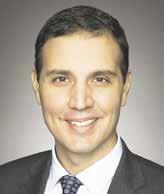
The Liberal government, supported by their coalition NDP partners, is on the verge of passing Bill C-11. We are seeing, that after months of criticism from the Conservative Party of Canada, the truth of what this Bill is and it is finally becoming a national conversation.
There is no other way to put it; Bill C-11, like the previous Bill C-10 from before the last election that failed to pass, is a Bill that allows the Government of Canada to censor and control what you see on the Internet.
Bill C-11’s proposed censorship is sneaky. It does not say that a regular Canadian or a content creator cannot post something online, that they cannot go onto YouTube, or cannot participate in social media platforms. What it does do is say very clearly that the government could control who sees these posts, opinions, and other content. Through this piece of legislation, the government will expand the mandate of the CRTC so that they will have the power to regulate online content.
The Internet plays a large role in our lives, it has changed how we communicate with one another, our choices of entertainment, and even how we conduct business. Its influence is undeniable, and we need to protect Canadians’ right to use it and keep government from manipulating it.
The Liberals have used the premise of “protecting Canadian content” as a method to expand their control. The use of this term is deceptive because, at first glance, many folks wouldn’t have a problem with promoting Canadian content, but the reality of Bill C-11 is that “Canadian content” is an excuse to accomplish a political objective. We know this because the Liberals have refused to tell us what defines this very broad term and experts have weighed in sharing their concerns. The irony of the situation is that the more the Liberals hide their motives, the more it becomes evident that they have something to hide. This was on full display when they moved closure to shut down debate on this in Parliament. Freedom of expression is critical to a strong democracy that ensures the fundamental rights and freedoms of citizens.
This legislation will massively expand the ability of government, and those with political objectives could manipulate Canadians’ need for the Internet for their advantage. Instead of showing you the things you want to view, you would see only the things the government wants you to view.
Conservatives have been working diligently to stop this Bill, have exposed the impact this will have on Canadians, and will continue to work to preserve freedom. You can be assured that a Pierre Poilievre-led Conservative government will repeal Bill C-11, actually promote Canadian content and Canadian creators, and will protect and respect individual rights and freedoms.
I have appreciated the many constituents who have reached out about this Bill and am proud to support the preservation of freedom of expression. Ensuring that everyone from everyday Canadians to Canadian content creators can have their voice is extremely important to me as a Canadian and as a Member of Parliament.
If you have any questions or concerns regarding this column, you are encouraged to write Damien at 4945-50 Street, Camrose, Alberta T4V 1P9, call 780-608-4600, text 403-575-5625, or e-mail damien.kurek@parl.gc.ca. You can also stay up to date with Damien by following him on social media @dckurek. If you are in need of assistance regarding a federal government program, or need assistance and don’t know where to turn, feel free to reach out to MP Kurek’s office.
By Lori LarsenThere was a little “lambpede” on the Rondeau farm on April 16, as adorable little newborn sheep ran recklessly around the outdoor pen, chasing each other, jumping at their mamas and just enjoying the sunshine and fresh air after being cooped up for approximately 147 days in mama’s belly.
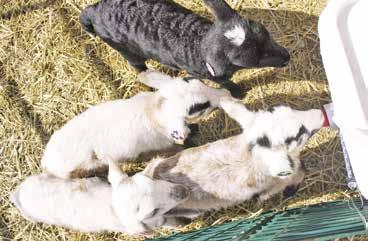
While inside the Rondeau’s barn, other ewes were separated in pens, some with brand new babies, others anxiously waiting to become a mama.
because the ewe can continue to produce enough milk for them as they grow, and they tend to start out and grow faster than triplets or quads. If a ewe has more than two lambs, I will usually take some away from her and they become bottlefed. This allows the other two to thrive and reduces the strain on the ewe.”
sleep,” smiled Rob. “That’s primarily why I don’t want to take on any more than 20 ewes per year. But on a good day, I can get chores done in 30 minutes in the morning and again at night.”
The Rondeaus, Julie, Rob and children Oliver (12) and Tristan (10), have been raising sheep since 2015, with a focus on the Rideau breed. “They are a fairly prolific breed of wool sheep and good milk producers,” explained Rob, adding that he is transitioning towards Katahdin, which is a breed of hair sheep that does not require shearing. “I’m making the switch because the Katahdin are a bit easier to keep, with no need to shear them and they’re quite hardy. They also tend to have twins more often than not, which means I have fewer lambs to bottle-feed.”
The Rondeau flock is currently comprised of about half of each breed, with a goal of phasing out the wool breed. The breeding stock consists of 20 ewes which, to date, have produced 32 lambs (with two losses) and seven more ewes left to lamb.

“Our first lambs this year were born on April 5, and we had a bunch of lambs on April 10 (16 in 24 hours),” said Rob. “I expect we’ll be done with lambing by the second week of May.”
This year, the Rondeaus experienced a first with a set of quintuplets; unfortunately, one of the five was lost at birth. “We have also had six sets of triplets so far. No quadruplets yet this year, but we usually do get a couple of sets of quads and we might still get some.”
Only one of the newer ewes had a single lamb; the rest, so far, have had twins.
“Twins are really ideal,
The majority of the sheep are raised and marketed for meat, with the demand growing every year. “ We sell a little over 20 butchered lambs each year to our customers, and keep three to five ewe lambs every year to replace the older ewes.” The remaining sheep will be sold to commercial business.
And despite the use of technology, keeping a vigilant eye on the flock is an ever present concern. “We’ve lost a few lambs and even mature ewes in the past few years to coyotes. We have three llamas which help keep the coyotes away, but if a lamb ventures too far away from protection or a sheep gets separated (sometimes one will sneak under a fence or find a hole), they baa and start to get stressed and panic. They really like to stay with
For anyone not in the business of farming lambs, the birthing blitz of the cute little creatures is fun to watch; but for the Rondeaus, and all livestock farmers for that matter, the work can be very challenging.
“Having six ewes lamb in the same day was pretty hectic,” said Rob. “I have nine pens set up for lambing–six in my barn, which I can monitor with Wi-Fi cameras, and three pens outside in a shelter, which doesn’t have a camera set up right now just because of the location.
“On the day that six ewes all had their lambs, there were already four pens occupied with newborns, and a couple of other pens taken up by other expectant ewes, so there was a lot of shuffling animals around and catching ewes that were about to lamb, but weren’t penned up yet.”
Between herding expecting moms and bottlefeeding newborns every four to six hours around the clock, there was little time to do much else. “Including

the flock, and when they get separated, they become fairly easy targets.”
But for Rob and the family, it is worth the work and worry, because it provides them all with opportunities so many city folk never get to experience.
“I love being outdoors, and I love problem solving. Having livestock is a continuous problem, you’re always trying to find ways to set things up more efficiently, keep the animals healthy and happy, save on costs, and maybe even make some money, if you get lucky.
“And our boys are always excited to see new babies on the farm. It’s an experience you won’t get living in a big city, and it will stay with you for the rest of your life, hopefully instilling the values and work ethic that we want our children to have as adults.”
Petting a little black lamb with a heart-shaped spot on its head is an experience I highly recommend. It truly makes one realize the miracle of spring, new birth and new hope.
780- 673-9593
WWW.AMRAA .CA

HW Y 13 & 56 • CAMROSE, AB
The Alberta Government is committed to providing adequate health care services to all communities in the province. Alberta Health Services, the province’s publicly funded health care system, has invested in a variety of initiatives to ensure that rural Albertans have access to the health care services they need.
Having access to health care when and where Albertans need it includes expanding capacity to provide better access for Albertans living in rural and remote areas of the province.
Our government is committed to expanding and modernizing rural hospitals and other health facilities across the province to protect quality health care, grow system capacity, and support the best front-line health care workers in the world.
Health care confusion in Alberta is a growing concern for many citizens. With a confusing mix of private and public health care options, it can be difficult to understand the differences and determine which is the best option for one’s needs. This confusion can lead to delays in care and suboptimal health outcomes.

In Alberta, the public health care system is funded and managed by the provincial government. It is known as Alberta Health Services (AHS) and provides care to all citizens at no cost to the patient. This includes primary care, specialist care, hospital care, laboratory services and some mental health services.
On the other hand, private health care in Alberta is administered by insurance companies, which charge fees for their services. These services can be used to supplement public health coverage, such as to receive quicker access to certain services, or to cover services that are not available through the public system, such as certain types of surgeries.
The main cause for confusion arises when trying to determine which type of health care is the best option for a particular situation. The decision is often made on the basis of cost, as private health care can be expensive, along with the private system covering services that are not covered by the public system.

It is also important to consider that some services are only available through the public system, such as long-term care and home care. Therefore, it is important to understand the differences between the two systems in order to make the best decision for one’s health.
Ultimately, the best way to navigate Alberta’s health care system is to speak to a health care professional who can provide advice on the best option for a particular situation. It is also important to keep in mind that the public health care system is free, while private health care comes with a cost. Therefore, it is important to weigh the pros and cons of both options before making a decision.
The Alberta Government is committed to making sure that all Albertans have access to the health care services they need, regardless of where they live. The government’s investments in rural health care are helping to ensure that rural Albertans have access to the care they need to maintain their health.
Contact my office if you require my assistance. A reminder that I am a commissioner of oaths and a notary public and provide the service free for constituents.
If you have any questions or concerns, contact my office. We are always here for you!
You can contact Jackie Lovely, Camrose MLA, at Constituency Office, 104, 4870-51 Street, Camrose, AB T4V 1S1. Tel: 780-672-0000, camrose@assembly.ab.ca or at Legislature Office, 6th Floor, 9820-107 Street, Edmonton, AB T5K 1E7.
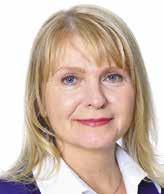

Submitted

A food security grant of $50,000 was received by Camrose and District Home Support Society’s Lyndel Kasa (Camrose and District Support Services executive director), left, and the Society director Maria Lobreau, right, from Camrose MLA Jackie Lovely. The funds will be used to assist seniors’ community kitchens. This funding will assist with reduction of the cost of food will and assist more people who are low-resourced, who would qualify for a low-cost or free meal.
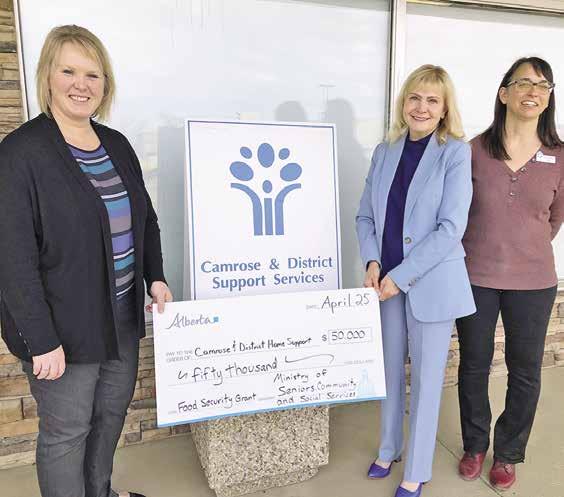
As
child,
view that matters that affected our family were largely the result of what our family chose to do.
It was us, within the family, that determined what work was to be done, how it was to be done, and what methods should be used in completing any task.
It was the decisions of our mother and dad that made the family achieve whatever level that was to be. Being farm raised, we children held that the limiting factors about our quality of life were weather and the availability of cash.
Now, eight decades after my life started on our farm, I live in a world where increasingly someone somewhere else directs our ability for personal management.

No longer can we phone our bank. In fact, it is nearly impossible to directly contact anyone in a large operating system.
Sure, we can phone, press repeated numbers to hear preselected options developed by some far away non-entity. What do we do when none of the choices relate to our concern? We choose the most probable option. Usually, those options indicates that we should check with: www. blah, blah, blah.com
Upon checking with the website and after scrolling for many wasted minutes, we are unable to acquire the information we are seeking. So, one thinks perhaps we should phone, but…darn, we have just done that.
Corporations argue that these systems deliver much greater efficiency. I agree, they do for the corporations. What about the efficiency of 37 million Canadians, who daily waste countless hours trying to navigate for an answer that ought to be simple.
Printed words such as, “Sorry that password has already been used.”, mean someone else is managing our decisions. It also implies that “out there” some computer knows all of our passwords. I yearn for self-directed living. When individual management decreases, it takes some of our self worth with it.
An unfortunate result of modern technology is the dehumanization of how we relate with others. Machines and technology have replaced people in so many outlets. People, at one time, were trained to be helpful. Moreover, there was a time when a need arose that a visit, directly or by phone, allowed that we could feel well-served by a friendly supplier. That has been replaced by impersonal machines. Too often we fight systems to solve issues. Help can be challenging to navigate.
Then there is the challenge of understanding bureaucracy-talk, rather than street language.
At the moment, the Government of Canada is offering incentives for citizens to move away from carbon use. That is a good idea. However, Greener Canada’s web application is turning people off. Of the people with whom I have spoken about the application, every one of them held the view that it was unduly complicated. I thought the government wanted us to turn away from carbon. If so, why this insensitive hardship? This is a case of bureaus using their internal language rather than communicating with we the people.
I am well aware of the impossibility of a return to hands-on service, but I long for an improvement in how citizens might have their needs met without that feeling that no one cares.
Of course, the advantages of technology are obvious to all of us, but we should not believe that we are helpless in making service a requirement. We need to demand a caring relationship. Taking our money can’t be allowed as the only measure for business and government success.
The success of big institutions ought not to be seen as equalling a happy society. I believe in efficiency and technology, but not at the expense of the human touch.
On April 15 and 16, the CRE hosted the second annual Acreage and Garden Show which featured a variety of exhibitors demonstrating and explaining their products and services, as well as not-for-profit organizations sharing information on their programs and services.


One-year-old

a
I held theLori Larsen, Camrose Booster Hudson Gendreau gets a little help from dad Dylan, with the Pick A Duck game at the Select Lumber Sales booth. Lori Larsen, Camrose Booster Camrose and District Horticultural Society representative Sandra McLay offers information to the CRE 2023 Acreage and Garden Show attendees. Lori Larsen, Camrose Booster Presenter Megan Lethbridge speaks about the best flowers for backyard bouquets.
Camrose County appointed weed inspectors for the coming growing season at the regular meeting of the council on April 25.

“I move that Camrose County appoint Alison Cardinal, Euclid St. Jean, Tim Sand, Rick Uglem and Troy Hellekson as inspectors pursuant to the Weed Control Act and Agricultural Pests Act,” said councillor Don Simpson.

The County follows the Weed Control Act as a local authority to appoint inspectors to enforce and monitor compliance with the Act within the municipality.





An inspector appointed by a municipality may, with the consent of the local authority of another municipality, enforce and monitor compliance with this Act.





































































As May 29 draws near, the Jack ie Lovely Campaign team would like to express a hear tfelt thanks to all those who have taken the time to speak to us, offering their much needed eedback and their encouragement as we’ve visited many of the wonderful communities within the Camrose Constituenc y, k nock ing on hundreds of doors
Once again, thank you to the communities we’ve visited so far:
As we continue door-knock ing over the coming weeks, we also welcome all constituents to reach out by phone or email to our office. We’d love to hear from you!


 By Murray Green
By Murray Green
Camrose County council is making sure the County has water in the future.

At the regular council meeting on March 28, WaterSmart made a presentation with Steve Herman and Rain Saulnier passing on information.
“I move that Camrose County approve the services contract with WaterSmart Water Management Solutions for the provision of expert services in the pursuit of obtaining a raw water license for Camrose County of 700,000 cubic meters in the amount of $38,000, with funding to come from the 2023 MSI operating grant,” said councillor Don Simpson.
Camrose County is seeking a secure water supply to support industrial development in the region, with a focus on valueadded agricultural processing near the Cargill processing plant. This location is ideal for development due to access to CN and CP rail tracks, multiple highways and general proximity to the Edmonton International Airport and City of Edmonton.
The County is seeking a supply of water on the order of 500,000 m3/year to capitalize on existing industrial opportunities and to attract more in the future.
“WaterSMART Solutions were retained in early 2023 to assess water sourcing opportunities within the Battle River watershed. This effort, referred to as Phase 1, revealed that the County has several options for accessing water, including a new water licence application and a transfer of existing water licence(s),” said County administrator Paul King.
Phase 1 included data gathering and analysis, hydrologic modelling and engagement with Alberta Environment and Protected Areas (AEPA), which will be the regulator for the County’s water use. Of the options available to the County, a new water licence application was found to be the most promising, with a water licence transfer of the existing Enerplus licence available as a good alternative.
“Based on the research done on behalf of Camrose County and as demonstrated in the presentation, it is evident that the current unused Enerplus water license of 1,275,420 cubic meters of allocation on Coal Lake may not be the easiest route to Camrose County obtaining its
ou could win a photograph of your farm!

If this
your





The farm appearing in this photograph is located in the Camrose trading area. If you recognize it as yours, come to the Camrose Booster, 4925-48 Street, Camrose. You will be presented with a free

• The Mystery Far m winners for April 18 are Charlie and Rhonda Broughton from the Meeting Creek area.


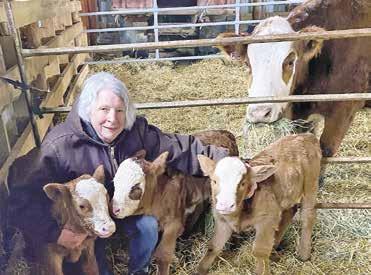
• This week’s prize must be claimed by May 9, 2023.







own water license,” said Herman.
Camrose County does not have the in-house expertise and established contacts that WaterSmart has to deal with the regulatory requirements to make this project happen in a timely manner. That is why they acquired its services.


Administration recommended that they be directed to work with WaterSmart to develop a plan of action and to pursue acquisition of a new water license of 700,000 cubic meters from the Battle River as a source and Camrose County as the licensee.



Funding for this project will come from the MSI Operating Grant.
The primary surface
water source for Camrose County is the Battle River and water use is governed by the Battle River Water Management.
Driedmeat Lake is a relatively large reservoir within Camrose County. The lake is a relatively reliable source of water, however, diversion is not always possible due to seasonality and regulatory requirements.
Additional storage will likely to be required to retain water during nonrainy weather periods.
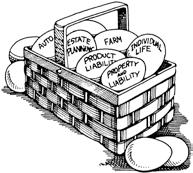
Camrose County will study the regulatory application for a new surface water licence, as well as the cost to construct water infrastructure to source water for industrial use.
